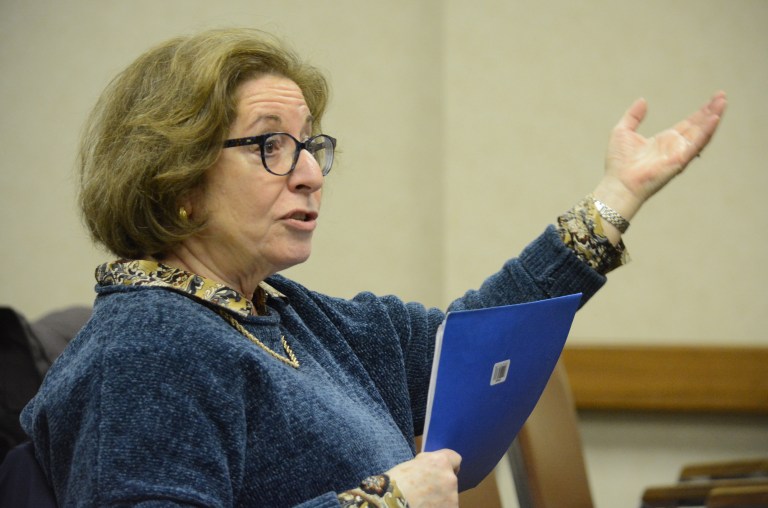
Great Neck Plaza trustees and residents discussed the first draft of a proposed tree law that’d require getting a permit to remove trees and replace them on Wednesday, with some questioning its complexity and mandate.
Currently the village has a tree management policy – effectively guidelines – but no law on the books. The proposal aims to remedy that and require a homeowner removing a tree first get a permit from the commissioner of public works, before replacing said tree to preserve the character of the area.
The law would also put in fines and penalties for someone removing a tree without a permit and largely limit tree planting in the “public right of way” to the village.
“We’ve had a number of instances where property owners have gone ahead and taken out trees and not come to the village to ask whether that’s permitted or not,” Great Neck Plaza Mayor Jean Celender said, adding that she feels they “can do more to help maintain and preserve our trees.”
Deputy Mayor Ted Rosen said he understands the purpose of the law and that there shouldn’t be a fee, given that the cost of removing a tree is already “an expense.” But, he said, there’s some “overkill” in the law when it comes to the requirements for homeowners.
Reading from a draft version of the law, Rosen said an application would require someone to map out all proposed structures and driveways on the site and identify all trees on the land with their size and species.
It also requires a homeowner to designate trees endangering public utilities, details on grade changes, and how the homeowner would maintain the trees, he said.
“If you look at the requirements for an application for a permit, I would have to go out and hire an architect or a lawyer to do that application,” Rosen said. “I’m not necessarily against the concept of someone coming to the village to get a permit to take down a tree – I don’t think there should be any fee for that – but we’ve got to simplify this.”
Trustees also said that the village should make recommendations on a replacement tree, but would not mandate a homeowner pick a specific type of tree.
Susan Yellin, a Highland Avenue resident, said she has no issue with a fee and the need to show “good cause” to remove a tree. But in the case of many homeowners in Wyngate Place, who have large homes on small plots, it would be “onerous and inappropriate” to require the replacement of trees on private property.
Yellin suggested making a non-replacement fee – or a “payment in lieu of tree replacement” – to go toward a fund that could plant trees in other portions of the village as an option.
Michael Sweeney, the commissioner of public services, said there are many cases where a tree cannot be placed in the same spot. He also said that his services are already paid through via taxes, so a fee for a permit shouldn’t be necessary.
“She contributes, and I would put a tree somewhere in her community because I don’t want to put it over on Maple Drive, because then it ‘Queensifies’ her neighborhood,” Sweeney said of how the process would theoretically go. “We try to find somewhere in her neighborhood to put a tree.”
Trustees ultimately adjourned the hearing to March 6, when a modified version of the proposal will be presented.






